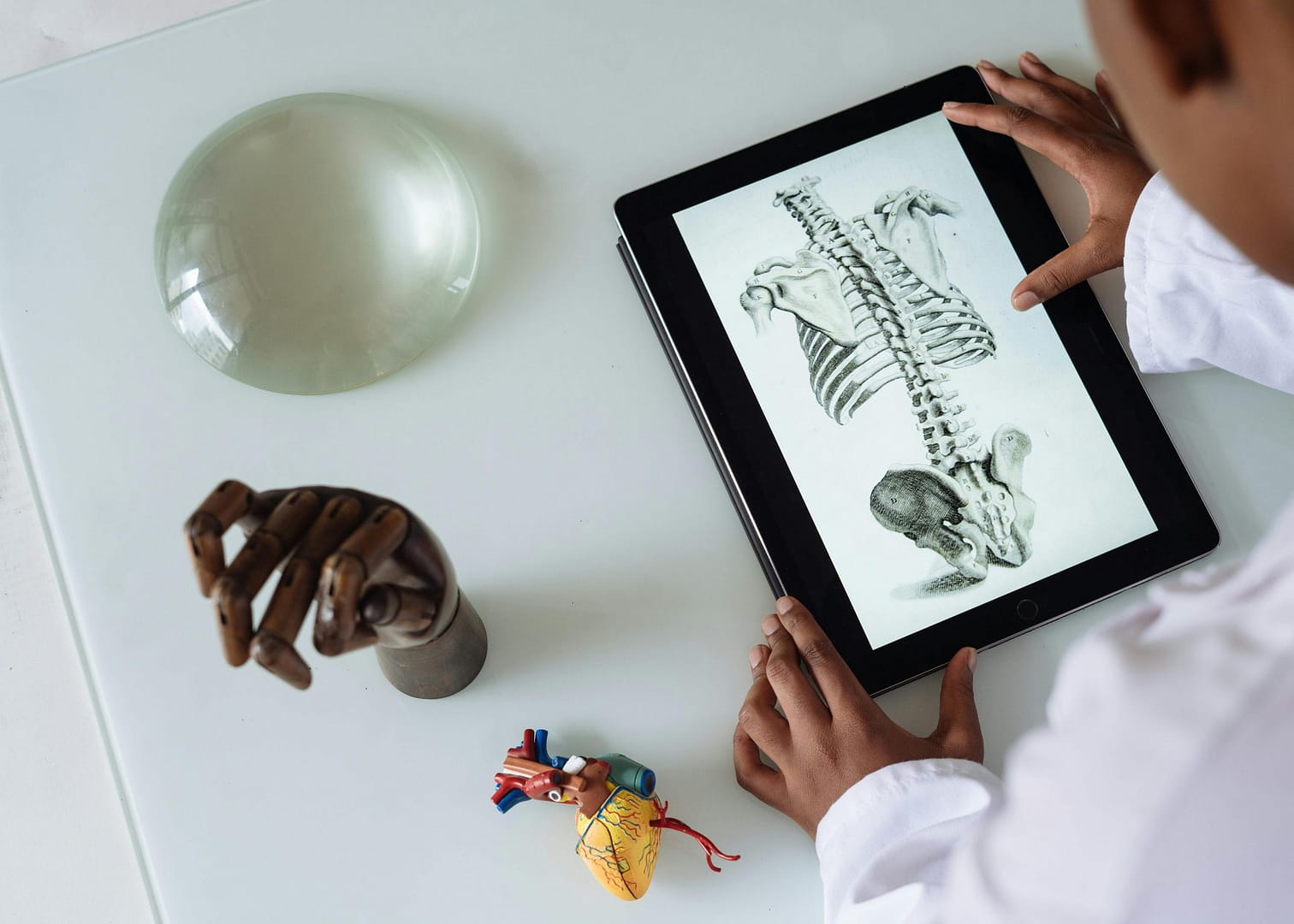Spinal cord injuries (SCIs) can be life-altering events, impacting mobility, independence, and overall well-being. Yet, the field of medical technology is constantly evolving, offering a beacon of hope for those living with SCIs. These advancements are not just about regaining lost functions; they’re about empowering individuals to reclaim their lives and reach their full potential.
Let’s delve into five such technologies that are making a significant difference, We will also highlight how you can start a medical negligence claim.
Brain-Computer Interfaces (BCIs): Direct Control for Spinal Cord Injuries
Imagine controlling a robotic arm with just your thoughts. BCIs are revolutionizing human-computer interaction for individuals with SCIs. These devices capture brainwave activity and translate it into digital commands, allowing users to operate wheelchairs, computers, and even prosthetic limbs.
BCI technology is still in its early stages, but ongoing research is yielding promising results. Studies have shown individuals with SCIs using BCIs to perform daily tasks like opening doors, grasping objects, and even typing. The potential for BCIs to bridge the communication gap is also immense, allowing people with locked-in syndrome to express themselves and interact with the world.
Functional Electrical Stimulation (FES): Restoring Movement After Spinal Cord Injury
FES has been around for decades, but advancements in miniaturization and control algorithms are making it a more powerful tool for improving mobility in individuals with SCIs. FES works by sending gentle electrical pulses to paralyzed muscles, stimulating contractions and enabling movement.
Imagine someone with paraplegia regaining the ability to stand or take assisted steps. FES can make this a reality. By stimulating specific muscle groups, FES can help individuals with SCIs improve balance, posture, and even walking ability. This not only enhances independence but also offers significant health benefits by reducing the risk of pressure sores and other complications associated with prolonged immobility.
One promising area of research involves combining FES with robotic exoskeletons. These wearable devices provide additional support and stability, allowing individuals with SCIs to walk with greater ease and confidence.
Bioprinting and Tissue Engineering: Regeneration for Spinal Cord Injuries
The future of spinal cord injury treatment might lie in the realm of bioprinting and tissue engineering. These technologies aim to repair or replace damaged spinal cord tissue, potentially leading to a degree of functional recovery.
Bioprinting utilizes specialized printers to create three-dimensional structures using biocompatible materials, including living cells. Scientists are working on bioprinting customized grafts that could be implanted at the site of injury to promote regeneration of the spinal cord.
Tissue engineering takes a different approach, focusing on growing new tissue in a laboratory setting. By using a patient’s own cells, researchers hope to create functional spinal cord implants that could restore lost connections between the brain and the body.
While these technologies are still in their early stages, they hold immense promise for the future of SCI treatment. The ability to regenerate damaged tissue could lead to significant improvements in mobility, sensation, and overall quality of life for individuals with SCIs.
Receive a Call About Your Claim
Advanced Assistive Technologies: Enhancing Daily Living with Spinal Cord Injury
Technology is not just about restoring lost function; it’s also about making everyday life easier and more manageable for those living with SCIs. A wide range of assistive technologies are available, from smart home devices to robotic aids, all designed to promote independence and improve well-being.
Smart home systems allow individuals with SCIs to control lights, appliances, and thermostats using voice commands or smartphone apps. This not only enhances comfort and convenience but also fosters a sense of control over one’s environment.
Robotic aids, such as robotic arms and grippers, can assist with tasks like reaching for objects, dressing, and preparing meals. These devices can significantly improve a person’s ability to perform daily activities, promoting self-sufficiency and reducing reliance on others.
As technology continues to evolve, we can expect even more sophisticated and user-friendly assistive technologies to emerge, empowering individuals with SCIs to live fuller and more independent lives.
Telehealth and Remote Monitoring: Accessible Spinal Cord Injury Care from Anywhere
Spinal cord injuries often require ongoing medical management. Telehealth and remote monitoring technologies are revolutionizing healthcare delivery by making it easier for individuals with SCIs to access the care they need from the comfort of their homes.
Telehealth consultations allow individuals with SCIs to connect with doctors and therapists virtually, eliminating the need for travel and reducing the burden of attending appointments. This is especially beneficial for those with limited mobility or who live in rural areas.
Making a Personal Injury Claim After a Spinal Cord Injury Accident
Spinal cord injuries (SCIs) caused by car accidents can be devastating, impacting every aspect of your life. National Claims understands the immense challenges you face and is dedicated to helping you secure the compensation you deserve. Here’s how we can assist you in navigating a personal injury claim after a spinal cord injury accident:
Free Consultation and Case Evaluation:
The first step is to understand the details of your accident and the extent of your injuries. We offer a free consultation where you can speak with a dedicated member of our team. We’ll listen attentively to your experience and review the specifics of the accident. and then connect you with solicitor for our panel who will be a able to assess your case.
No Win, No Fee Representation:
We understand that financial worries can compound the already significant challenges you face. That’s why we operate on a “No Win, No Fee” basis. You won’t pay any upfront legal fees. Our fees are only contingent on a successful outcome.
*Customers pay up to 25% (incl. VAT) of the amount recovered towards solicitor costs and if you cancel outside your cooling off period, you may be charged a fee.
Conclusion
The field of spinal cord injury treatment is undergoing a period of tremendous transformation. The five technologies we’ve explored – brain-computer interfaces, functional electrical stimulation, bioprinting, advanced assistive technologies, and telehealth – offer a glimpse into a future where individuals with SCIs can live with greater independence, improved function, and a renewed sense of possibility.
While challenges remain, the rapid advancements in medical technology provide a powerful testament to human ingenuity and the unwavering pursuit of a better tomorrow. As research continues and these technologies become more refined and accessible, we can look forward to a future where spinal cord injuries no longer define limitations, but rather become hurdles that can be overcome with the help of groundbreaking innovation.
Contact us today to speak to one of our claims agents who will be able to help you get started on your claim.
Click below to see why we are one of the most trusted claims management companies in the UK.

We’re proud of our excellent customer reviews
We thrive on delivering exceptional service and ensuring our clients’ satisfaction. Don’t just take our word for it. Check out some of our independent reviews to see what our clients have to say.
Excellent

This firm is excellent, they sorted out my car pay out and injury claim very fast, they always communicate with you all the time.

My accident case was dealt with confidence and with great result of the outcome, especially James kept me informed all the time.

I was very impressed at the way my inquiry was treated. I was listened to attentively and everything I needed to know was explained to me.






